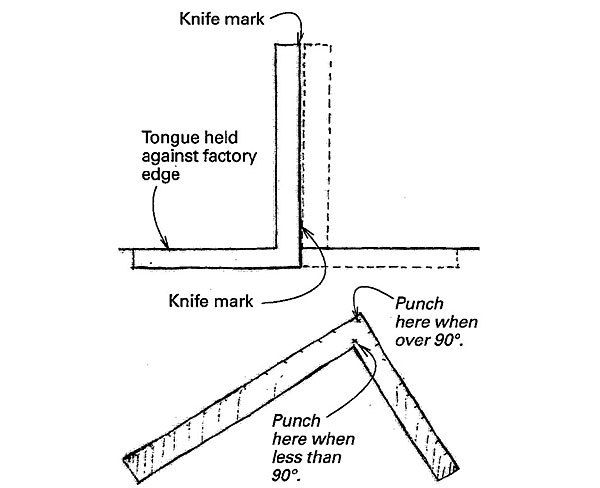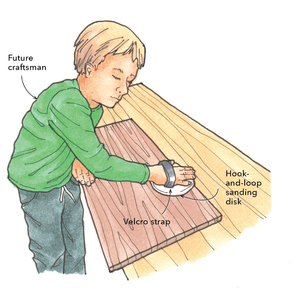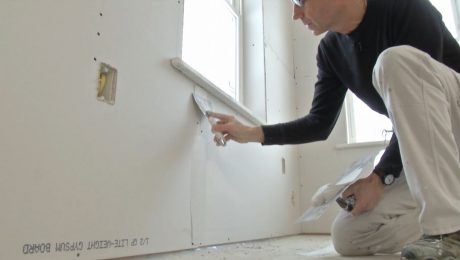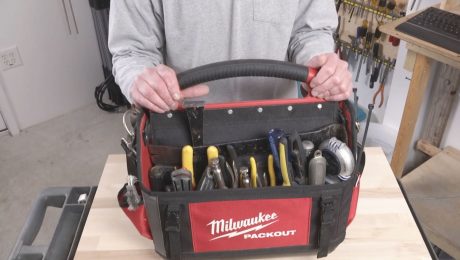
Framing squares are like levels. You expect them to be reliable and accurate, but they aren’t always. Sometimes a square just isn’t, well, square.
You can check one for accuracy by holding the square’s tongue against the factory edge of a sheet of plywood, as shown in the drawing. Make knife marks in the plywood along the square’s body at both ends. Next, flip the square over. With the tongue held flush to the plywood, the square’s body should line up with the knife marks. If it doesn’t, the gap either at the top or at the bottom will tell you if the square is less than or more than 90°.
If it’s less than 90°, get out your center punch, place the square on an anvil or some other equally hard surface, and give the square one whack on each side at the inside corner. This expands the metal, increasing the angle. Check for square, and repeat the process as necessary until you get to 90°. If the square is more than 90°, use the punch on the outside comer.
Kim Aaboe, Head of Jeddore, None





























